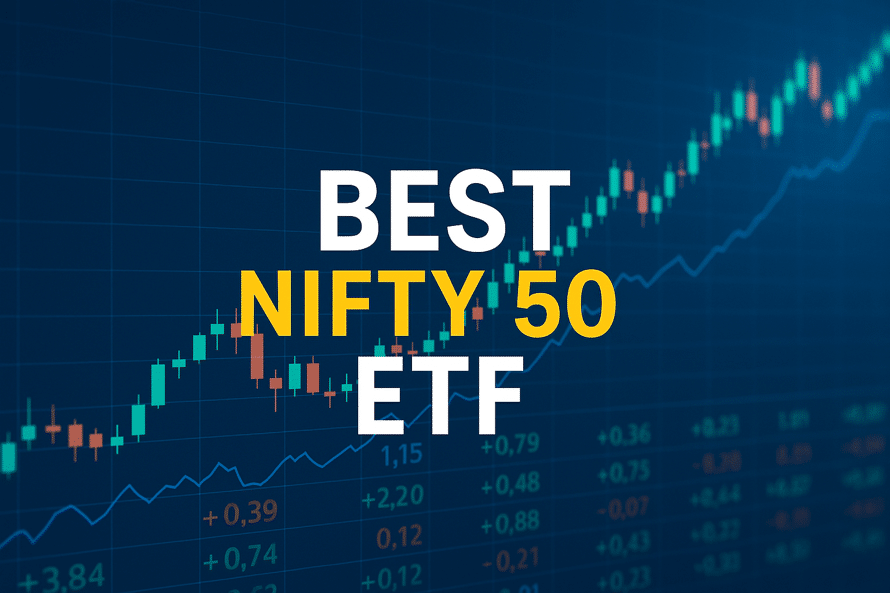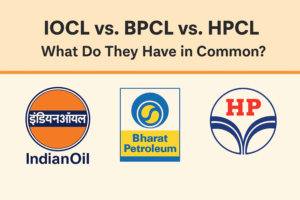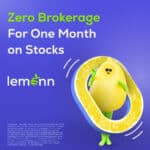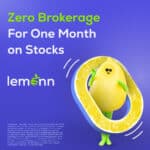
Exchange-traded funds (ETFs) are an easy way of investing in stocks. They operate like mutual funds, but ETF trading is done on stock exchanges like shares. The Nifty 50 ETF is one of the most popular investment options in India. The Nifty 50 index monitors how well the top fifty companies listed on the NSE are performing. People who want a dependable way to grow their wealth often invest in the best Nifty 50 ETFs.
What Are Nifty 50 ETFs and How Do They Work?
Investing in India’s top 50 companies is easy with Nifty 50 ETFs. They mimic the Nifty 50 index, which comprises major companies such as Reliance, Infosys, and HDFC Bank.
Definition and Basic Mechanism
The Nifty 50 ETF (Exchange Traded Fund) is designed to mirror the performance of the Nifty 50 index. Whenever you purchase units of a Nifty 50 ETF, you are effectively purchasing shares in every company in the index. Like regular stocks, these ETFs are bought and sold on the stock market.
Why Choose Nifty 50 ETFs for Your Portfolio?
A Nifty 50 ETF is suitable for those starting to invest and investors looking at the long term. Investing in an index fund gives you access to many major Indian companies at once. Many are looking for the best Nifty 50 ETF so they can benefit a lot with minimal effort. For context, the trading volume of Exchange-Traded Funds (ETFs) on the National Stock Exchange (NSE) surpassed 1.19 trillion Indian rupees during fiscal year 2024.
Key Advantages and Limitations
Nifty 50 ETFs help investors manage risk and provide several benefits. Generally speaking, fees on exchange-traded funds are often much lower than those charged by mutual funds, though there are exceptions. However, the fund’s performance mirrors that of the index and does not outperform it. In addition, market risks can still impact the results.
Key Metrics to Evaluate Nifty 50 ETFs
To invest in the leading Indian companies, looking into a Nifty 50 ETF is one of the best ways. How can you determine which is the best Nifty 50 ETF? Here are five metrics that one should consider while selecting the product.
Expense Ratio and Its Long-Term Impact
The expense ratio measures how much you will pay over the course of a year to own a fund. Assets are managed for a fee based on your investment. A lower expense ratio will be advantageous to ETF investors. Typically, low-cost equity ETFs will have a net expense ratio of no more than 0.25%.
Tracking Error: Measuring Index Replication Accuracy
Tracking error explains how well the ETF mimics the Nifty 50 index. When the tracking error is low, the fund performs closer to the index targets. This is important as you do not want your ETF to move in the opposite direction of the Nifty 50.
AUM (Assets Under Management) and Its Significance
AUM shows the total funds investors have invested in an ETF. Assets under management (AUM) are an important indicator of investor trust and popularity. ETFs that manage a significant AUM are usually more stable and are run better.
Liquidity and Trading Volume
Liquidity is all about how smoothly you can trade the ETF. The more trades in the market, the higher the trading volume. With this, you can buy or sell quickly without major price shifts. Look for a fund that shows high traffic to ensure that buying or selling is easy.
Role of Fund House in Passive Investing
Well-known fund houses tend to follow guidelines closely. They handle changes in indexes, payment of dividends, and tax-related things smoothly. Passive investors trust that a reliable fund house will manage their money the right way. Selecting a recognized name is crucial when deciding on the best Nifty 50 ETF.
Top Nifty 50 ETFs in India (2025)
Nifty 50 ETFs allow investors to easily access some of India’s largest and most profitable companies. These ETFs are designed to track the Nifty 50 Index and are suitable for people wanting passive exposure to the market.
SBI Nifty 50 ETF
The ETF stands out mainly because of the investment it gathers and the trust shown by both retail and institutional investors. By keeping each component stock at its actual index weight, the ETF replicates the Nifty 50 Index. The ETF’s credibility and size make it one of the best Nifty 50 ETF options for Indian investors.
UTI Nifty 50 ETF
UTI Nifty 50 ETF has provided steady and reliable returns. It tracks the Nifty 50 Index closely, with only a slight divergence. HDFC Bank and Reliance Industries are among the fund’s top holdings. The fund performs consistently across different market situations, making it dependable.
Nippon India Nifty 50 BeES
Nippon India Nifty 50 BeES has been trading longer and is more liquid than many other Indian ETFs. It comprises shares of all Nifty 50 stocks, including HDFC Bank at 11.35% and Reliance at 8.65%.
ICICI Prudential Nifty 50 ETF
ICICI Prudential Nifty 50 ETF is known for its low fees. It follows the index with a diversified portfolio, where HDFC Bank tops the list with an 11.33% share. Investors are attracted to the fund because the costs are low. Low fees and consistent performance make this one of the best Nifty 50 ETFs for cost-conscious investors.
Comparison of Top ETFs: Which One Should You Choose?
Indian investors consider Nifty 50 ETFs due to their low fees and broad market exposure. Let’s assess some of the leading ETFs so you can choose the best Nifty 50 ETF.
Performance Snapshot: 1-Year, 3-Year, 5-Year CAGR
Nippon, UTI, HDFC, and ICICI are among the leading Nifty 50 ETFs. Over the last five years, the Nippon Nifty 50 ETF has given a 5-year CAGR of 13%. UTI and HDFC ETFs also consistently produce strong 1-year and 3-year returns. Always review the historical CAGR before investing your money.
Cost and Tracking Efficiency Overview
Nippon has one of the most reasonable expense ratios at 0.8%, which gives value for your money. ICICI and UTI ETFs have reported the lowest tracking error. Investment funds will likely bring better returns over many years when the expenses are low and the tracking error is low.
Liquidity and Ease of Trade
If an asset has high liquidity, trading becomes easier. These ETFs are quite liquid, which helps in running transactions without any problems.
Best ETF for Retail vs. Institutional Investors
People investing their own money prefer simple and inexpensive funds such as Nippon. Tracking accuracy and the ability to handle large trades are important to institutional investors. Due to their good investment returns and smooth functioning, large investors tend to choose ICICI and UTI ETFs.
Other Notable Nifty 50 ETFs Worth Considering
Other than the Nifty 50 ETFs we have discussed, several Nifty 50 ETFs provide good alternatives. Some of them are listed below.
HDFC, Kotak, Mirae, Tata, Axis, and Others
ETFs offered by HDFC, Kotak, Mirae Asset, Tata, and Axis mutual fund houses are being noticed by many investors. You get fair costs and assured monitoring of the Nifty 50 with them. Mirae Asset and Axis have expanded quickly because their funds do well, and they keep fees low. Investors believe Tata and Kotak ETFs are stable and reliable. Take a look at these if you want to find the best Nifty 50 ETF.
Risks of Investing in Lower Liquidity ETFs
Some ETFs might have lower trading volumes, which may cause the bid-ask spread to widen. It is possible to purchase at a higher price or sell for less. Make sure the liquidity is good before making an investment decision.
Conclusion
Purchasing the best Nifty 50 ETF allows investors to invest in leading Indian companies with less risk and at a low expense. You can easily buy and sell these ETFs, which are great for growing your wealth over time. Whether you are just starting out or a seasoned investor, selecting the best Nifty 50 ETF can give you exposure to the top 50 companies in India with less risk.
FAQs
1. What is a Nifty 50 ETF, and how is it different from mutual funds?
A Nifty 50 ETF reflects the Nifty 50 index and is traded on major stock exchanges. Since mutual funds are actively run, the fund management costs may be higher than those of ETFs.
2. Which is the best Nifty 50 ETF in India as of 2025?
SBI Nifty 50 ETF, UTI Nifty 50 ETF, and Nippon India Nifty 50 BeES are some of the leading Nifty 50 ETFs in India.
3. Are Nifty 50 ETFs safe for long-term investment?
You can consider Nifty 50 ETFs safe for a long-term investment. They provide a diversified portfolio that tracks the top businesses in India.
4. How much does it cost to invest in a Nifty 50 ETF?
The minimum investment is often under Rs. 300, which allows you to own a single unit of the fund. Fees such as brokerage, STT, and exchange fees might be applied to ETF purchases or sales.
5. Can I trade Nifty 50 ETFs like stocks on the exchange?
Yes, Nifty 50 ETFs are designed to be traded like stocks on exchanges. During market hours, use your demat and trading account to trade in ETFs.
6. What are the tax implications of investing in Nifty 50 ETFs?
Investing in Nifty 50 ETFs makes you liable to pay capital gains tax and dividend tax. For gains from units held for less than 12 months, a short-term capital gains tax rate of 20% applies. Gains from units held for more than 12 months are taxed at a higher rate of 12.5%, if the profit is more than Rs. 1.25 lakh per financial year. Dividend tax is also applicable as per your income tax slab rate. TDS at the rate of 10% is applicable if IDCW income Rs. 5,000 in a financial year.
7. Is it better to invest in ETFs with higher AUM?
Generally, having more Assets Under Management (AUM) in an ETF leads to better liquidity, narrower bid-ask difference, and steady returns.
8. How do I choose between SBI, ICICI, UTI, and Nippon ETFs?
Study how tracking error, expense ratio, AUM, and liquidity vary between these ETFs. Research how the fund has performed and find out about the experience of the people in charge.
9. Do Nifty 50 ETFs pay dividends?
Yes, several Nifty 50 ETFs pay dividends. The fund house’s dividend policy will guide how dividends are distributed.







